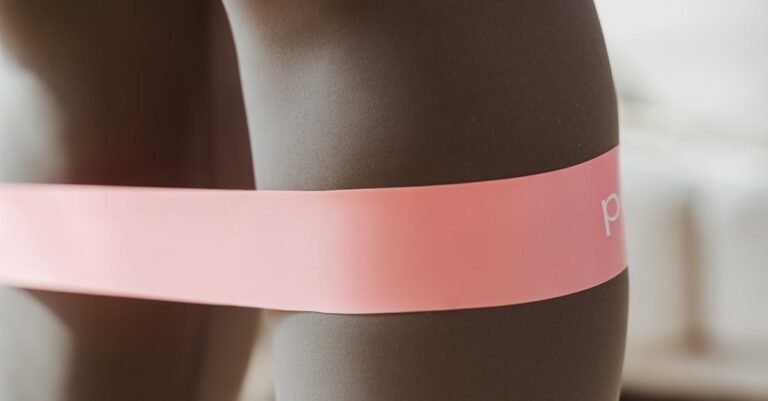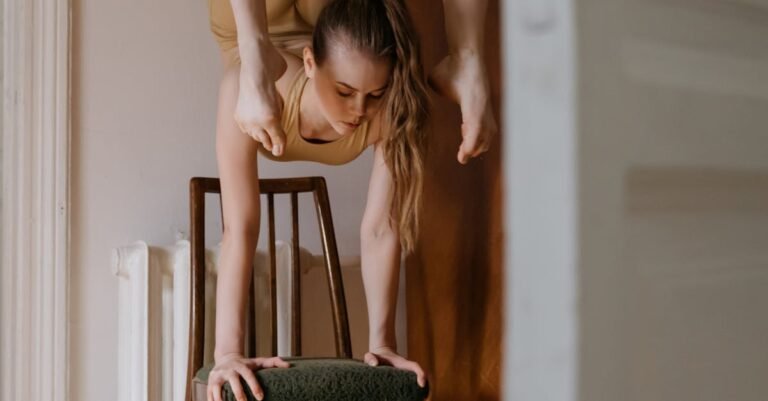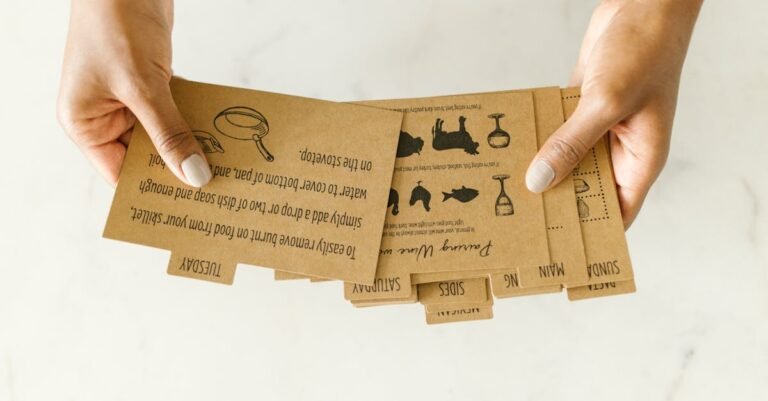Table of Contents
- Simple Core Exercises Beyond Crunches: Build Real Strength
- Why Move Beyond the Basic Crunch?
- The Pillars of a Truly Strong Core
- Awesome Core Exercises You Can Do (Almost) Anywhere
- Putting It All Together: Building Your Routine
- Conclusion: Your Stronger, More Functional Core Awaits
- Frequently Asked Questions (FAQs)
Simple Core Exercises Beyond Crunches: Build Real Strength
Okay, let’s talk core strength. When you think “core workout,” what’s the first thing that pops into your head? Chances are, it’s the good old crunch, right? We’ve all done them, probably hundreds, maybe thousands, chasing that elusive six pack or just trying to flatten our tummy. But what if I told you that relying solely on crunches is like trying to build a house using only a hammer? You’re missing out on a whole toolbox of exercises that build real, functional core strength!
Crunches have their place, sure, but they barely scratch the surface of what your core is capable of and what it needs. We’re diving deep today into simple, effective core exercises that go way beyond the basic crunch. Forget endless repetitions that strain your neck; we’re talking moves that stabilize your spine, improve your posture, boost your athletic performance, and even make everyday activities like carrying groceries or playing with your kids easier and safer. Ready to unlock the true potential of your core?
Why Move Beyond the Basic Crunch?
It feels almost like fitness blasphemy to question the crunch, doesn’t it? It’s been the go to ab exercise for decades. But like many things we once thought were the peak of efficiency (hello, dial up internet!), we’ve learned better ways. It’s time to understand *why* moving beyond crunches is so crucial for a truly strong and healthy core.
The Limitations of Crunches
Think about what a crunch actually does. You lie on your back and repeatedly flex your spine, shortening the distance between your ribs and your pelvis. This primarily targets one muscle group: the rectus abdominis, the “six pack” muscles right at the front. While these muscles are part of your core, they’re just one piece of a much larger puzzle.
Here’s the rub:
- Limited Muscle Engagement: Crunches largely ignore the deep stabilizing muscles, the obliques (your side abs), and the muscles in your back and hips that are *essential* for core stability and function.
- Spinal Stress: Repeated spinal flexion under load (even just your body weight) can potentially put stress on the discs in your lower back, especially if your form isn’t perfect. Think of bending a credit card back and forth – eventually, it weakens.
- Doesn’t Mimic Real Life: How often in your daily life do you need to repeatedly curl your upper body like that? Your core’s main job isn’t just to flex your spine; it’s often to *prevent* unwanted movement, stabilize your torso, and transfer power between your upper and lower body. Crunches don’t train these critical functions effectively.
- Neck Strain: Many people inadvertently pull on their head or neck while doing crunches, leading to strain and discomfort rather than effective core work.
So, while a few crunches might not hurt, relying on them as your primary core workout is selling yourself short. You’re building a showy facade without reinforcing the deep, foundational structures.
What is Your ‘Core’ Really? (Hint: It’s More Than Abs!)
Let’s redefine “core.” Forget just the six pack muscles. Imagine your core as a muscular corset or cylinder wrapping around your entire trunk, from your shoulders down to your hips. It’s a 3D structure!
This includes:
- Rectus Abdominis: Yes, the crunch muscles are included. They help flex the spine.
- Obliques (Internal and External): Located on your sides, these help with rotation and side bending, and crucially, they resist rotation.
- Transverse Abdominis (TVA): This is your deepest abdominal muscle. Think of it as your body’s natural weightlifting belt. It wraps around your midsection and is vital for stabilizing your spine and pelvis. You can’t really *see* it, but oh boy, is it important!
- Erector Spinae: These muscles run along your spine and help you stand up straight and bend backward.
- Multifidus: Small but mighty muscles deep in your back that stabilize each segment of your spine.
- Diaphragm: Your primary breathing muscle actually forms the *roof* of your core cylinder. Proper breathing mechanics are linked to core stability.
- Pelvic Floor Muscles: These form the *floor* of the core cylinder, supporting organs and contributing to stability.
- Glutes (Butt Muscles) and Hip Flexors: These are powerful movers that attach to the pelvis and are intrinsically linked to core function and stability. Weak glutes often lead to core instability and lower back pain.
See? It’s way more complex and interconnected than just the muscles you see in the mirror. A truly strong core means all these muscles are working together harmoniously to support, stabilize, and move your body effectively and safely.
The Pillars of a Truly Strong Core
To build that functional, robust core, we need to train it in the ways it’s designed to work. Forget just flexing; think stabilizing, resisting, and powering movement. These are the key pillars we need to focus on, moving beyond the limitations of the simple crunch.
Stability: Your Body’s Anchor
Imagine trying to fire a cannon from a canoe. Doesn’t work very well, right? The canoe (unstable base) rocks wildly, and the cannonball loses power and accuracy. Your core provides the stable base – the solid ground – for all your movements. Whether you’re lifting a heavy box, throwing a ball, or just standing on one leg, your core muscles fire up to keep your spine and pelvis stable, preventing unwanted wobbling or buckling.
Core stability is the foundation upon which strength and power are built. It protects your spine from injury by ensuring forces are distributed correctly. Exercises like planks and their variations are fantastic for building this isometric (holding) strength and teaching your core muscles to brace effectively.
Anti Rotation: Resisting Unwanted Twists
Think about walking through a crowded place or getting unexpectedly bumped. Your core instantly engages to stop you from twisting or falling over. This ability to *resist* rotation is arguably one of the most important functions of your core in daily life and sports. It protects your spine from potentially harmful twisting forces.
While some rotational movements are necessary (like swinging a golf club), much of your core’s job is to *control* that rotation or prevent it altogether. Crunches do absolutely nothing for this! Exercises that challenge your ability to stay stable while a force tries to twist you (like the Pallof Press we’ll discuss later) are gold for building anti rotational strength.
Dynamic Movement: Powering Your Actions
Your core is the vital link transferring energy between your lower and upper body. Think about jumping, sprinting, throwing, or swinging. Power generated by your legs travels up through your stable core to be expressed by your arms, or vice versa. A weak or unstable core acts like a leaky pipe – energy gets lost, movements become less powerful, and the risk of injury increases.
Exercises that involve controlled movement of the limbs while maintaining a stable torso (like Bird Dogs or Dead Bugs) train this dynamic stabilization and coordination. They teach your core to work seamlessly as you move, which is how it functions in the real world.
Awesome Core Exercises You Can Do (Almost) Anywhere
Alright, enough theory! Let’s get to the good stuff – simple yet powerful exercises that target your core in a much more holistic and functional way than crunches. Most of these require minimal to no equipment, making them perfect for home workouts.
The Plank Family: More Than Just Holding Still
Planks are the quintessential core stability exercise. They force multiple core muscles (TVA, obliques, rectus abdominis, back extensors, glutes, shoulders) to work together isometrically to hold your body in a straight line. But there’s more to planks than just the basic hold!
Classic Forearm Plank: The Foundation
How to do it: Lie face down, then prop yourself up on your forearms and toes. Keep your elbows directly under your shoulders and your forearms parallel (or hands clasped). Engage your core by pulling your belly button towards your spine (imagine bracing for a light punch). Your body should form a straight line from your head to your heels – no sagging hips or piking your butt up! Squeeze your glutes and quads. Hold this position, focusing on maintaining tension and breathing steadily.
Why it’s great: It builds foundational isometric core strength and endurance, teaching your muscles to stabilize the spine against gravity. It hits the TVA, obliques, rectus abdominis, and even muscles in your back and shoulders.
Common mistakes: Letting the hips drop too low (strains the lower back) or pushing the butt too high (reduces core engagement). Holding your breath. Letting your head droop or looking too far up.
Start with: Holding for 20 30 seconds with good form, gradually increasing the time as you get stronger.
Side Plank: Hitting the Obliques
How to do it: Lie on your side with your legs straight. Prop yourself up on one forearm, ensuring your elbow is directly beneath your shoulder. Lift your hips off the ground until your body forms a straight line from your head to your feet. Engage your core, especially the side facing the floor (your obliques!). You can stack your feet or stagger them for more stability. Keep your hips square (don’t let the top hip rotate forward or backward). Hold, then repeat on the other side.
Why it’s great: This specifically targets the obliques and the quadratus lumborum (a deep back muscle important for lateral stability), which are often neglected in traditional ab workouts. It also challenges your balance and shoulder stability.
Common mistakes: Letting the hips sag towards the floor. Allowing the shoulder to creep up towards the ear. Rotating the torso.
Start with: Holding for 15 20 seconds per side, focusing on maintaining that straight line.
Plank Jacks: Adding Some Cardio
How to do it: Start in a high plank position (on your hands, not forearms), with hands directly under shoulders and body in a straight line. Keeping your core tight and trying to minimize hip movement, jump your feet out wider than hip width, like a jumping jack. Immediately jump them back to the starting position. Maintain a steady rhythm.
Why it’s great: This adds a dynamic and cardiovascular element to the plank. It challenges your core stability *while* your lower body is moving, forcing your core to work harder to prevent your hips from bouncing up and down or rotating.
Common mistakes: Letting the hips bounce excessively. Piking the butt up. Losing the straight body line.
Start with: 10 15 repetitions, focusing on control over speed.
Bridging the Gap: Glutes are Core Too!
Remember how we said the glutes are part of the core system? They play a huge role in pelvic stability and supporting the lower back. Strengthening them is crucial for overall core health.
Glute Bridge: Simple Yet Effective
How to do it: Lie on your back with your knees bent and feet flat on the floor, hip width apart, relatively close to your glutes. Keep your arms relaxed by your sides. Engage your core slightly, then squeeze your glutes and lift your hips off the floor until your body forms a straight line from your shoulders to your knees. Avoid arching your lower back excessively – the movement should come from hip extension driven by your glutes. Hold for a second at the top, squeezing your glutes hard, then slowly lower back down.
Why it’s great: Directly targets the glutes and hamstrings, improves hip extension, and engages the lower back muscles and abs for stability. It helps counteract the effects of prolonged sitting and can alleviate lower back pain caused by weak glutes.
Common mistakes: Pushing the hips too high (arching the lower back instead of extending the hips). Not squeezing the glutes at the top. Driving the movement with the hamstrings or lower back instead of the glutes.
Start with: 12 15 repetitions, focusing on the mind muscle connection with your glutes.
Standing Tall: Core Work Without Lying Down
Who says core work has to be on the floor? Standing core exercises often translate even better to real life activities.
Pallof Press: The Anti Rotation Champion
How to do it: You’ll need a resistance band or cable machine for this. Stand sideways to the anchor point of the band/cable. Hold the handle with both hands at chest height. Step away from the anchor point until there’s tension on the band. Stand with feet shoulder width apart, knees slightly bent, core braced. The band will be trying to pull you rotationally towards the anchor point. Your job is to resist this pull. Slowly press the handle straight out in front of your chest, keeping your core tight and preventing any rotation in your torso. Hold for a second, then slowly bring the handle back to your chest. Control is key.
Why it’s great: This is purely about anti rotation. It directly trains your obliques and deep core muscles to resist rotational forces, which is incredibly important for spinal health and athletic performance. It forces you to stabilize through your hips and torso.
Common mistakes: Allowing the torso to rotate towards the anchor point. Leaning away from the anchor point instead of resisting rotation. Shrugging the shoulders.
Start with: 8 12 repetitions per side, using a resistance level that challenges you but allows perfect form.
Dynamic Moves for a Functional Core
These exercises involve moving your limbs while maintaining core stability, mimicking how your core works during most activities.
Bird Dog: Balance and Stability Master
How to do it: Start on all fours (tabletop position) with hands directly under shoulders and knees directly under hips. Keep your back flat (neutral spine) and core engaged. Slowly extend one arm straight forward (bicep by your ear) while simultaneously extending the opposite leg straight back (squeeze the glute). Keep your torso and pelvis completely still – imagine balancing a glass of water on your lower back. Avoid arching your back or letting your hips rotate. Hold for a brief moment, then slowly return to the starting position with control. Repeat on the other side.
Why it’s great: Improves stability, coordination, and balance. It targets the muscles along the spine (erector spinae, multifidus), glutes, shoulders, and deep core stabilizers (TVA, obliques) as they work to prevent rotation and maintain balance.
Common mistakes: Moving too quickly. Arching the lower back when extending the leg. Letting the hips drop or rotate. Looking up and craning the neck.
Start with: 8 10 controlled repetitions per side.
Dead Bug: Coordination and Control
How to do it: Lie on your back with your arms extended straight up towards the ceiling and your knees bent at 90 degrees, directly over your hips (shins parallel to the floor). Engage your core and press your lower back gently towards the floor – maintain this contact throughout the exercise. Slowly lower one arm straight back towards the floor behind your head while simultaneously extending the opposite leg straight out, hovering just above the floor. Move only as far as you can while keeping your lower back connected to the floor and your core braced. Exhale as you lower. Slowly return to the starting position and repeat with the opposite arm and leg.
Why it’s great: Excellent for building core control, coordination, and deep stabilizer strength (especially the TVA). It teaches you to dissociate limb movement from spinal movement, protecting your lower back.
Common mistakes: Letting the lower back arch off the floor. Moving too quickly and losing control. Holding your breath. Moving the same side arm and leg together (unless doing a specific variation).
Start with: 6 8 slow, controlled repetitions per side.
Putting It All Together: Building Your Routine
So, how do you incorporate these exercises? You don’t need to do all of them every single day! The goal is variety and consistency.
Here’s a simple approach:
- Frequency: Aim to train your core 2 4 times per week. Your core muscles, like others, need time to recover and rebuild.
- Selection: Pick 3 4 exercises per session. Try to include a mix that covers different functions:
- One stability exercise (e.g., Plank variation)
- One anti rotation exercise (e.g., Pallof Press if equipment allows, or focus on controlling rotation in Bird Dog/Side Plank)
- One dynamic movement (e.g., Bird Dog, Dead Bug, Plank Jacks)
- Don’t forget the glutes! (e.g., Glute Bridge)
- Sets and Reps/Duration: For holding exercises like planks, aim for 2 4 sets, holding for a duration where you can maintain perfect form (e.g., 20 60 seconds). For movement based exercises, aim for 2 4 sets of 8 15 repetitions per side.
- Focus on Form: Quality over quantity, always! It’s better to do fewer reps perfectly than many reps with bad form. Feel the target muscles working.
- Progression: As exercises become easier, challenge yourself! Increase the hold time, add more reps or sets, slow down the movement for more control, or move to slightly harder variations (e.g., lifting a leg during a plank, adding weight to glute bridges).
- Listen to Your Body: If something causes sharp pain, stop. Modify the exercise or choose a different one. Mild muscle fatigue is normal, sharp joint pain is not.
You can add these exercises to the end of your regular workouts or do them as a standalone core session. The key is consistency and mindful execution.
Conclusion: Your Stronger, More Functional Core Awaits
So there you have it! We’ve journeyed beyond the basic crunch and uncovered a world of simple, yet profoundly effective core exercises. Remember, a truly strong core isn’t just about aesthetics; it’s the bedrock of your movement, stability, and overall physical health. It’s your body’s central powerhouse, protecting your spine, improving posture, enhancing performance, and making everyday life feel easier.
By incorporating exercises like planks, bridges, bird dogs, dead bugs, and Pallof presses, you’re training your core the way it was meant to function – as a 3D stabilizer and force transmitter. You’re building resilience from the inside out. Ditch the monotonous crunch routine and embrace these functional movements. Be patient, focus on form, stay consistent, and you’ll soon feel the difference. A stronger, more stable, and truly functional core is well within your reach!
Frequently Asked Questions (FAQs)
1. How often should I do these core exercises?
Aim for 2 4 times per week. This gives your muscles adequate time to recover and adapt between sessions. Consistency is more important than frequency; find a schedule you can stick to.
2. Can I still do crunches at all?
Yes, crunches aren’t inherently “bad” if done with good form and as part of a well rounded routine. However, they shouldn’t be your *only* or primary core exercise. Think of them as one small tool in a much larger toolbox. Prioritize the functional exercises discussed above.
3. Will these exercises give me a six pack?
These exercises will definitely strengthen all your abdominal muscles, including the rectus abdominis (the six pack muscle). However, visible abs depend heavily on having a low enough body fat percentage to reveal the muscle underneath. Diet plays the biggest role in fat loss. These exercises build the muscle; diet reveals it.
4. What if I feel these exercises in my lower back?
If you feel strain or pain (not just muscle fatigue) in your lower back, stop the exercise. It usually indicates poor form, core muscles not engaging correctly, or trying a variation that’s too advanced. Focus on bracing your core firmly (pulling belly button to spine), maintaining a neutral spine, and perhaps choosing an easier variation (e.g., knee plank instead of full plank, shorter range of motion in dead bug). If pain persists, consult a healthcare professional or qualified trainer.
5. Do I need any equipment for these exercises?
Most of the exercises discussed (Planks, Side Planks, Plank Jacks, Glute Bridges, Bird Dogs, Dead Bugs) require no equipment at all! The Pallof Press is the main exception, needing a resistance band or cable machine. You can build a very effective core routine using just your body weight.










